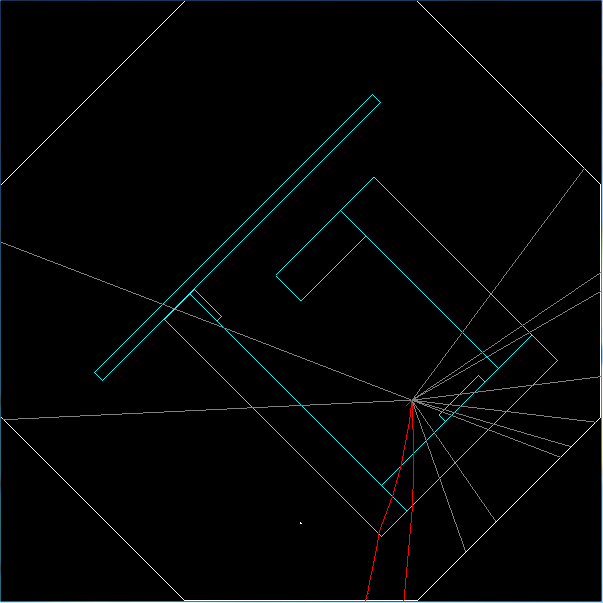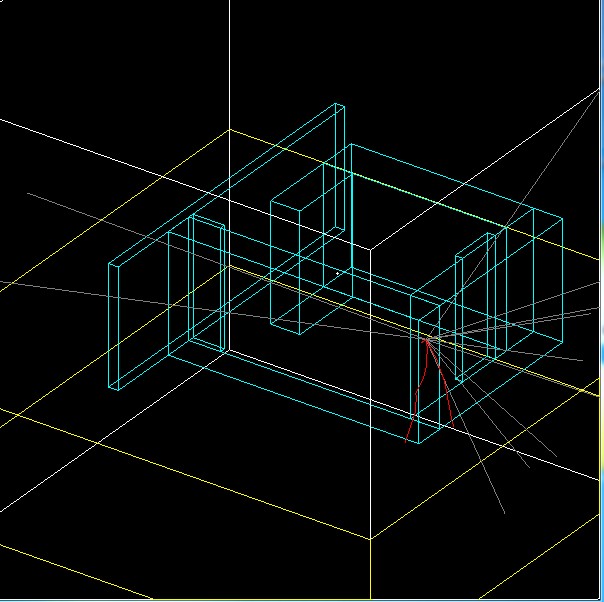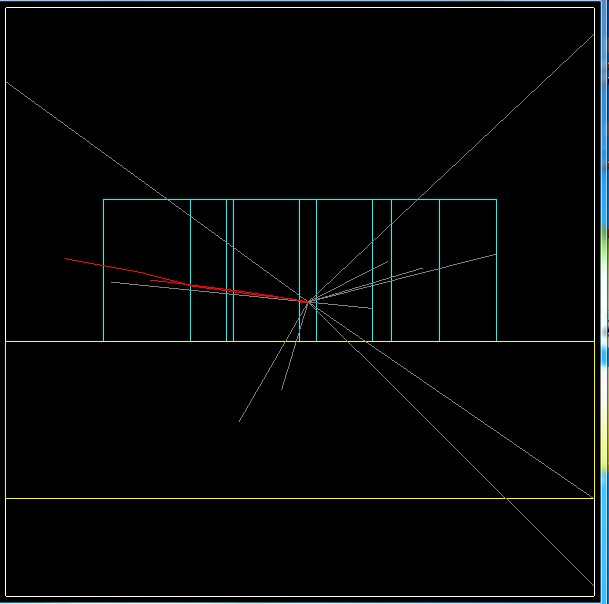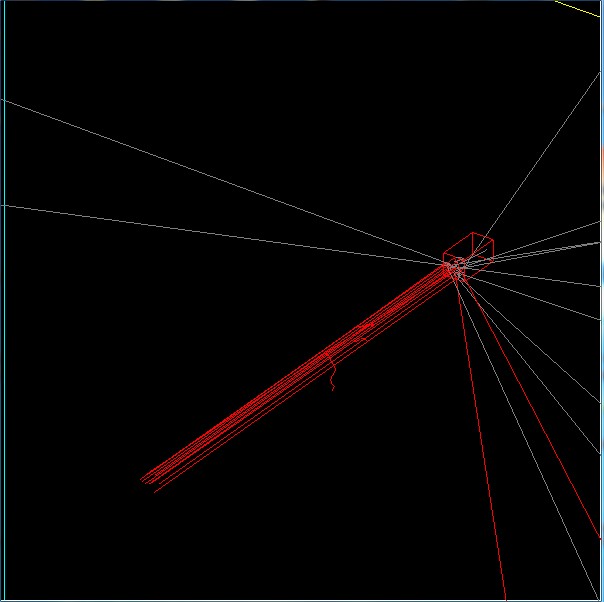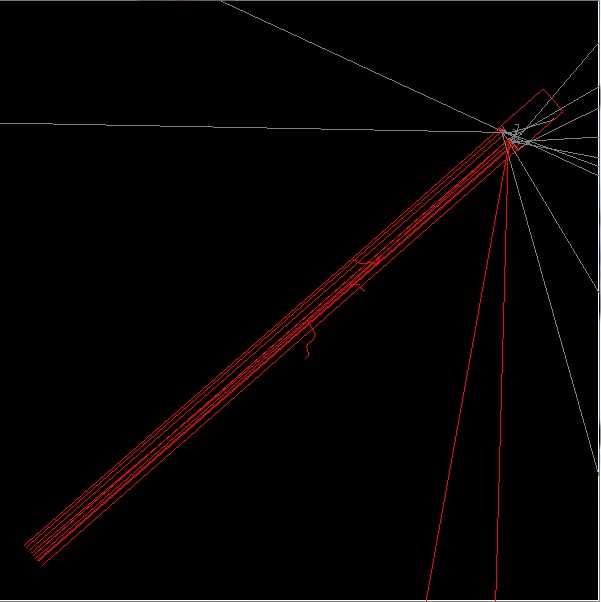HRRL radiation footprint simulations
Design a simulation to determine radiation footprint in HRRL cell.
1.) The ceiling is 4 feet thick
2.) there is PB shiedling between the HRRL accelerator room and the accelerator operator station
3.) the dirt is about 10 feet thick on the wall side where the accelerator is going to be mounted
4.) determine shielding wall thickness for HRRL cavity to reduce dose out the door
5.) Determine shielding for Tungsten converter
Drawing
Get a drawing from facilities documenting the shielding in that cell with dimensions
Denton Dance: x4710, may be able to provide drawings. B119 Beam Lab
Material Definitions
Concrete
Concrete has 6 elements and a density of 2.7 g/cm^3
| Element | Atomic Weight (A) | Atomic Number (Z) | Proportion by Weight |
| 1 | 1.0079 | 1. | 0.004 |
| 2 | 15.9994 | 8. | 0.509 |
| 3 | 26.981539 | 13 | 0.034 |
| 4 | 28.0855 | 14. | 0.345 |
| 5 | 40.078 | 20 | 0.070 |
| 6 | 55.8474 | 26. | 0.038 |
GEANT4 code
a = 1.0079*g/mole; G4Element* elH = new G4Element(name="Hydrogen",symbol="H" , z= 1., a); a = 15.9994*g/mole; G4Element* elO = new G4Element(name="Oxygen" ,symbol="O" , z= 8., a); a = 26.981539*g/mole; G4Element* elAl = new G4Element(name="Aluminum",symbol="Al" , z= 13., a); a = 28.0855*g/mole; G4Element* elSi = new G4Element(name="Silicon",symbol="Si" , z= 14., a); a = 40.078*g/mole; G4Element* elCa = new G4Element(name="Calcium",symbol="Ca" , z= 20., a); a = 55.8474*g/mole; G4Element* elNi = new G4Element(name="Nickel",symbol="Ni" , z= 28., a); density =2.7*g/cm3; G4Material* Concrete = new G4Material(name="Concrete ",density,ncomponents=6); Concrete->AddElement(elH, fractionmass=0.4*perCent); Concrete->AddElement(elO, fractionmass=50.9*perCent); Concrete->AddElement(elAl, fractionmass=3.4*perCent); Concrete->AddElement(elSi, fractionmass=34.5*perCent); Concrete->AddElement(elCa, fractionmass=7.0*perCent); Concrete->AddElement(elNi, fractionmass=3.8*perCent);
Relative Rates
The first step in the simulation will be to compare relative radiation rates at the exit of the accelerator room. The radiation exiting the accelerator room before and after moving the accelerator will be simulated. Although all particles can be tracked we will mostly be interested in gamma and neutron fluxes through the door. The ratio of before/after moving fluxes for gamma and neutron should be plotted as a function of energy.
Geometry
[HRRL room dimension measured by Jason Swanson]
HRRL Geom by Sadiq
what is the thicknes of the walls below.
GEANT4 Simulation Setup
HRRL Room Top view
HRRL Room 45 Degree View
HRRL Room Side view
HRRL Electron Source and Tungsten Target 45 Degree View
HRRL Electron Source and Tungsten Target Top View

